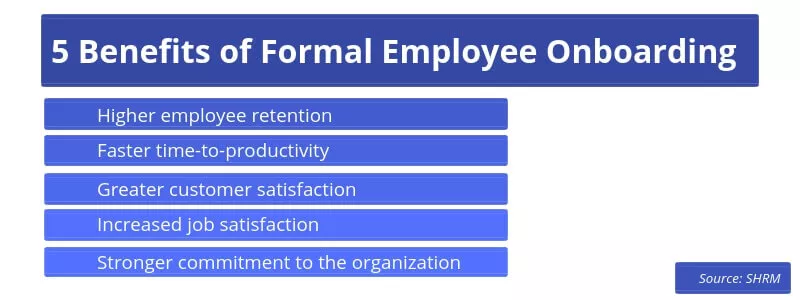Every few months I have the same terrible nightmare.
It’s always something like this: I’m going about my regular business, when suddenly I remember I’m performing a lead role in a play — later that night. I’m totally unprepared.
Somehow I get my hands on the script and frantically try to study, but inside I know I’m going to fail. There’s no way I can learn the plot, all of my lines, the stage directions, and whatever else a star actor needs to know in just a few hours.
I’m doomed. The play is about to start, and all I can think about is how to get out of it. The curtain rises, and there I am on stage, blinded by the lights, heart racing, wishing it would all just be over.
 Classic stress dream, right? I’ve never acted in a play in my life. But I have experienced the feeling of being unprepared, of knowing failure is inevitable, of feeling completely demoralized.
This gut-wrenching, anxious feeling of resignation is one everyone can relate to, and something everyone wants to avoid.
This is exactly how your new hires will feel if you don’t give them the tools and guidance they need to succeed. Without employee onboarding, your new hires will step on to “the stage” without a clue as to how to drive your business goals.
Classic stress dream, right? I’ve never acted in a play in my life. But I have experienced the feeling of being unprepared, of knowing failure is inevitable, of feeling completely demoralized.
This gut-wrenching, anxious feeling of resignation is one everyone can relate to, and something everyone wants to avoid.
This is exactly how your new hires will feel if you don’t give them the tools and guidance they need to succeed. Without employee onboarding, your new hires will step on to “the stage” without a clue as to how to drive your business goals.
 On the other hand, you can increase retention, boost performance, and raise employee motivation with a formal employee onboarding process.
More than half (52%) of organizations say effective onboarding improves employee retention rates, time to productivity (60%), and customer satisfaction (53%), SHRM found. Formal onboarding processes also lead to increased job satisfaction and commitment to the organization.
You can achieve these results in your organization, but it requires a deliberate and formal approach.
On the other hand, you can increase retention, boost performance, and raise employee motivation with a formal employee onboarding process.
More than half (52%) of organizations say effective onboarding improves employee retention rates, time to productivity (60%), and customer satisfaction (53%), SHRM found. Formal onboarding processes also lead to increased job satisfaction and commitment to the organization.
You can achieve these results in your organization, but it requires a deliberate and formal approach.

 New technology allows you to get more creative and cost-effective with your onboarding approach.
For example, many companies have begun using virtual reality tools to support onboarding.
VR is a fun, creative way to facilitate gamification, a proven method for employee training in a controlled environment. You can also use VR to give your new employees a realistic tour of a building, project, or colleague that they can’t physically access.
Robotic process automation also has great potential to streamline onboarding processes. RPA bots can assume the routine, mundane tasks your HR professionals currently handle, freeing them up to focus on the high-touch interactions with your new hires.
New technology allows you to get more creative and cost-effective with your onboarding approach.
For example, many companies have begun using virtual reality tools to support onboarding.
VR is a fun, creative way to facilitate gamification, a proven method for employee training in a controlled environment. You can also use VR to give your new employees a realistic tour of a building, project, or colleague that they can’t physically access.
Robotic process automation also has great potential to streamline onboarding processes. RPA bots can assume the routine, mundane tasks your HR professionals currently handle, freeing them up to focus on the high-touch interactions with your new hires.
 Classic stress dream, right? I’ve never acted in a play in my life. But I have experienced the feeling of being unprepared, of knowing failure is inevitable, of feeling completely demoralized.
This gut-wrenching, anxious feeling of resignation is one everyone can relate to, and something everyone wants to avoid.
This is exactly how your new hires will feel if you don’t give them the tools and guidance they need to succeed. Without employee onboarding, your new hires will step on to “the stage” without a clue as to how to drive your business goals.
Classic stress dream, right? I’ve never acted in a play in my life. But I have experienced the feeling of being unprepared, of knowing failure is inevitable, of feeling completely demoralized.
This gut-wrenching, anxious feeling of resignation is one everyone can relate to, and something everyone wants to avoid.
This is exactly how your new hires will feel if you don’t give them the tools and guidance they need to succeed. Without employee onboarding, your new hires will step on to “the stage” without a clue as to how to drive your business goals.
Don’t let your employee onboarding become a nightmare.
When you’re not prepared for employee onboarding, you’re preparing your new hires to fail
The SHRM defines onboarding as: “helping new hires adjust to the social and performance aspects of their jobs so they can quickly become productive, contributing members of the organization.” Without proper onboarding, what began as someone’s dream job could quickly devolve into a nightmare — for both of you. Without proper training, employees will become frustrated and stressed. They will probably become discouraged and disengaged. They’ll make more errors and require more help. Or, worst case scenario, they will quit.Poor employee onboarding will cost you
Think about the time, money, and attention you pour into recruiting, interviewing, and hiring new employees. If they churn, you not only lose all of that, but you have to spend it again to find a replacement. According to SHRM, the cost of replacing an employee could range from 50% to 60% of his or her annual salary. These costs include:- Formal training time and materials
- Mentoring time
- Lost productivity until the replacement becomes proficient in the role
Formal onboarding is a boon to your bottom line
 On the other hand, you can increase retention, boost performance, and raise employee motivation with a formal employee onboarding process.
More than half (52%) of organizations say effective onboarding improves employee retention rates, time to productivity (60%), and customer satisfaction (53%), SHRM found. Formal onboarding processes also lead to increased job satisfaction and commitment to the organization.
You can achieve these results in your organization, but it requires a deliberate and formal approach.
On the other hand, you can increase retention, boost performance, and raise employee motivation with a formal employee onboarding process.
More than half (52%) of organizations say effective onboarding improves employee retention rates, time to productivity (60%), and customer satisfaction (53%), SHRM found. Formal onboarding processes also lead to increased job satisfaction and commitment to the organization.
You can achieve these results in your organization, but it requires a deliberate and formal approach.
5 biggest employee onboarding mistakes
Before you begin planning, it’s important to understand which mistakes commonly derail onboarding efforts so you know how to prevent them. The most damaging mistakes include:1. Lack of preparation
One of the worst employee onboarding mistakes — and one of the easiest to prevent — is unpreparedness. If you’re not ready for a new employee’s arrival, they will immediately form a negative impression of your company. Your new hires will notice everything from whether their desk is clean and stocked with supplies to the clarity of the training agenda.2. Failing to clarify expectations
It’s critical to clearly communicate your expectations for your new employee — what are the requirements for the role? What type of work do you expect? What kinds of deadlines will they be under? Ambiguity won’t help you, and it certainly won’t help them. New employees need more direction, especially in the beginning.3. Burying them in information
There is a lot to learn when someone first joins a new company, but it’s important not to overwhelm them with information. When you design your onboarding process, identify the most important things they need to know and prioritize those first.4. Boring them with dull tasks
It will take your new hire time to fully understand their role and how they contribute to the company’s overall goals. However, it will be difficult for them to be engaged if you only give them fluff projects to work on. By giving them an important project at the beginning of their tenure, they will be excited and motivated to do their best.5. Ineffective software onboarding
Traditional approaches to training are not only costly and time-consuming, they are ill-equipped to prepare employees for the digital workplace. The average employee uses an average of 9.38 applications to perform daily tasks. If you want to thrive in the digital era, you have to give your workforce training tools that will prepare them to use a variety of enterprise tools.
Achieve best-in-class employee onboarding with these tips
You can avoid these mistakes by adhering to the following best practices.1. Create an agenda
An effective agenda includes all of the goals for your onboarding program, as well as performance indicators that will measure its success. Make the goals detailed — describe who needs to be involved in the training, what resources are required, and how long it will take.2. Provide a contextual learning solution
We’ve established that traditional approaches to training don’t work in the digital workplace. So what is the best solution? The answer is contextual learning. Digital learning tools that enable contextual learning propel your onboarding efforts forward. They enable your new hires to complete tasks while learning to use new software so they can achieve high productivity while gaining proficiency.3. Cater to different learning styles and personality types
A one-size-fits-all approach to training during the onboarding process won’t get you very far. You must offer employee training methods that account for differences in learning styles and personality types when considering different types of employee training. Ask employees how they like to learn and provide digital learning tools that can be tailored to each individual’s needs.4. Use micro-moments to your advantage
Micro-moments are the short but meaningful moments during which employees form impressions of the company. By being aware of how micro-moments influence your new hires’ attitudes, you can ensure each part of the onboarding process supports a positive employee experience.5. Solicit feedback throughout the onboarding process
Your employees will have valuable ideas and tips to make your onboarding process better. Don’t wait until the end to ask — let your new hires know from the beginning that their feedback is welcome, and be sure you amend your approach to best fit their needs.Set your new hires up for success.
The digital paradox — how technology can make or break your onboarding success
The adoption of technology in the modern workplace can unleash new capabilities and efficiencies for employees. But you can’t achieve these benefits without successful training. During the onboarding process, it’s easy for new employees to feel overwhelmed by the volume and complexity of enterprise systems they need to learn to use. If you don’t provide effective software training from the start, your new hires will get stressed and frustrated. From there, it’s a short road to disengagement and poor performance. Software training doesn’t just protect your employee experience. It also helps ensure you get a positive ROI on your technology investment.Emerging tech can improve your onboarding efficiency
 New technology allows you to get more creative and cost-effective with your onboarding approach.
For example, many companies have begun using virtual reality tools to support onboarding.
VR is a fun, creative way to facilitate gamification, a proven method for employee training in a controlled environment. You can also use VR to give your new employees a realistic tour of a building, project, or colleague that they can’t physically access.
Robotic process automation also has great potential to streamline onboarding processes. RPA bots can assume the routine, mundane tasks your HR professionals currently handle, freeing them up to focus on the high-touch interactions with your new hires.
New technology allows you to get more creative and cost-effective with your onboarding approach.
For example, many companies have begun using virtual reality tools to support onboarding.
VR is a fun, creative way to facilitate gamification, a proven method for employee training in a controlled environment. You can also use VR to give your new employees a realistic tour of a building, project, or colleague that they can’t physically access.
Robotic process automation also has great potential to streamline onboarding processes. RPA bots can assume the routine, mundane tasks your HR professionals currently handle, freeing them up to focus on the high-touch interactions with your new hires.
Give your employee onboarding an extension
Onboarding shouldn’t end after your new hire’s first few days, a week, or a month. Effective onboarding should be treated as a long-term initiative. The most critical, high-priority aspects of learning will occur in the beginning so your new employee can become a meaningful contributor as soon as possible. But ongoing development is a fundamental part of onboarding that many training managers and HR professionals overlook. When designing your continuous employee training plan, work together with your new hires to define their professional goals and growth trajectory within the company. Then you can identify which employee skills are the most important for them to work on.Don’t let your new hires’ nightmares become reality
If you don’t prepare a formal onboarding system, there’s no way your employees can reach their full potential. That stressed out, panicking feeling from your nightmares about starring in a play (or wait, is that just me?) will become their reality. An effective employee onboarding system requires careful planning, budgeting, coordination, and attention. But if you’re willing to invest in your new hires, they’ll be poised to succeed — and so will you.WalkMe’s Digital Adoption Platform (DAP) transforms the user experience in today’s overwhelming digital world. Using artificial intelligence, engagement, guidance, and automation, WalkMe’s transparent overlay assists users to complete tasks easily within any enterprise software, mobile application or website. Discover how a DAP can revolutionize your business.

